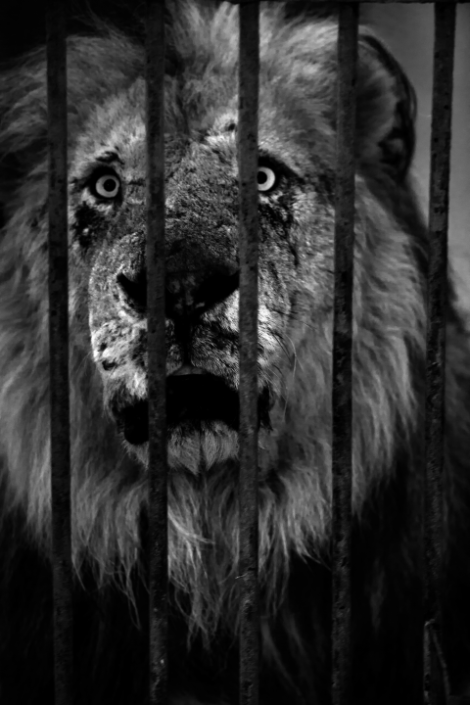This photo centres around a single facial expression and builds a whole story around it. It is powerful because the emotion is very recognizable and captured succinctly.
The thing about facial expressions is that it mostly happens in a split second. And so we value the work of photographers like these to immortalize a single, precious moment of truth so that the story can be perpetrated to millions later.
So we take this picture with the lion in an obvious look of despair and imagine the before and after and the story of his situation.
Yet, expressions happen in progression and a single cross-section within that progression may tell a story very different from what it appears. For example, this could be the look of the lion in mid-sneeze as he sucks in a staccato of air. (I don’t know if lions sneeze but there’s a very famous video of a panda sneezing.)
In this way, a very legitimate expression that really happened could be far from the “truth” of the conclusion we draw.
When I first started doing street photography, I took this photo – an old man with his eyes closed, surrounded by a crowd of people who seemed to be very busy and noisy – with motion blurs and all.

What it looks like is the weariness of a person in the crowd, shutting the world out.
In fact, he just so happened to blink when my shutter clicked. And what happened before and after was that he was chatting energetically with his friend on the left.
I liked that story a fair bit – a weary person shutting the world out, right in the middle of a busy street – but I knew it wasn’t true. That is to say, maybe people do feel this way, the sentiment might be true, but in this context, that is not what happened.
It has troubled me since.
The idea that the photographer can hit upon a fluke moment and get a picture that tells the exact story he wants to tell. And it may be true, in a general sense, though not in the particular context of the photo. But is it still true?
The purist in me cannot abide that.
For that reason, I am very careful to think that stories are really about the subject. I think that they are about the storyteller (or photographer) more than they will ever be about the subject.
For example, nobody can say for sure the lion does not like being caged up. (This is really simplistic and most people will argue if being denied freedom can ever be a good thing but this exactly shows how we impose certain values on things we don’t really know about e.g. we all think it’s sweet that otters hold hands and they’re in love, but they really hold hands because of survival in a pack. But maybe they are in love, who can say?) But there are conclusions one can draw about the photographer who sees the lion’s “despair” at being caged up – that he/she believes in sentient things being free, for example. And this goes further than being able to think in your subject’s shoes etc., because that conclusion also draws from the fact that the photographer has chosen this to photograph out of everything else that can be photographed.
But let’s also run down that line of thought – that the photographer sees certain things as a result of the sum total of his experiences, fears and conditioning. Two people with different sets of experiences, fears and conditioning are going to see very different things in a given scene. (I reference Dan Ariely’s concept “the effect of expectations” in Predictably Irrational without elaboration – just as a note to self.)
And also as a note to self, maybe for a future post:
Priority of who the story is about – storyteller/artist/photographer/writer/etc. > audience > subject
When an audience comes into contact with a story, the determination of how much he takes away from the story is the overlap of the storyteller and the audience. If the Venn overlaps, the more it does, the more personally moving he might find it. If the Venn does not overlap at all, he walks away thinking “meh”. So art is not about the story of the subject and the scene, it really is the artist’s story and its relevance in the audience.

Reblogged this on Mango's Lense.